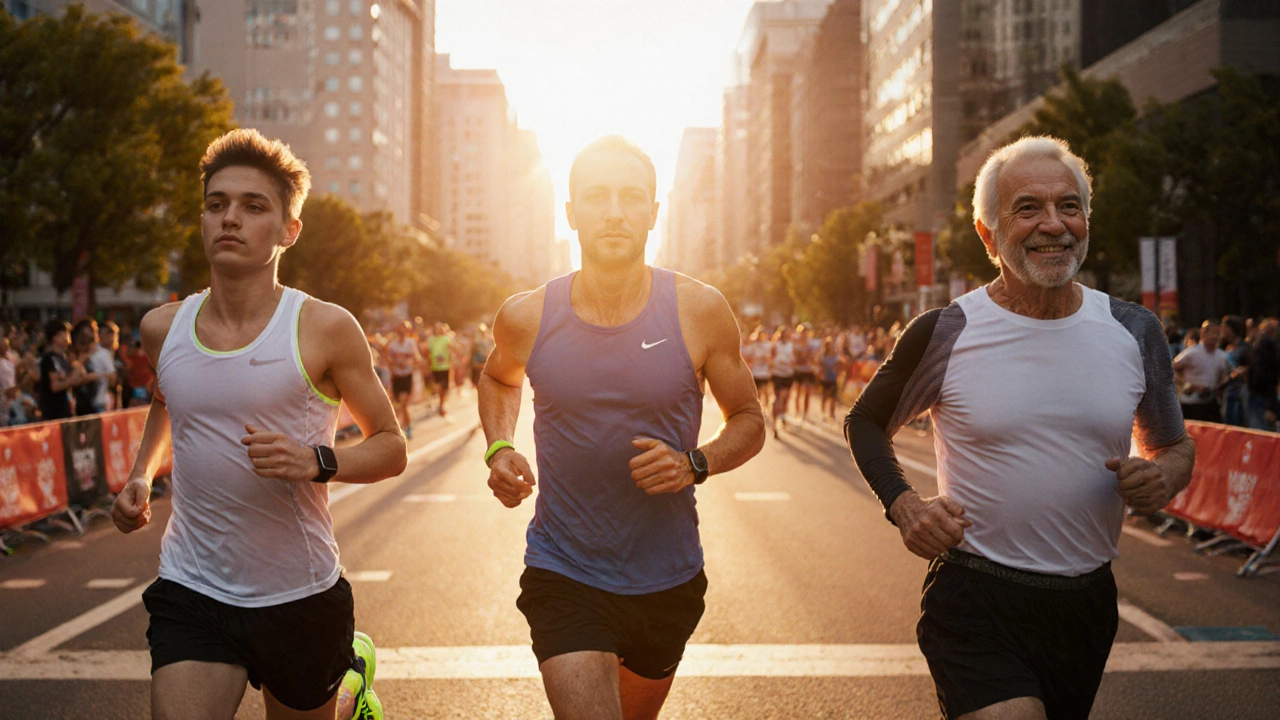
Marathon Training Age – Tailoring Your Run to Your Years
When planning a marathon, the marathon training age, the concept that a runner’s chronological age influences training volume, intensity, and recovery needs becomes a game‑changer. It’s not just a number; it dictates how much mileage you can safely handle, how quickly you bounce back, and which workouts deliver the best return. Closely linked is age‑specific training, a set of guidelines that match training stress to the physiological changes that come with each decade. Together they shape endurance performance, the ability to maintain a steady pace over 26.2 miles while minimizing fatigue and injury. In short, understanding your marathon training age helps you set realistic goals, avoid overtraining, and stay injury‑free.
Key Factors That Change With Every Year
First up, training volume. Younger runners (late teens to early 30s) generally tolerate higher weekly mileage because their musculoskeletal system recovers faster. As you hit your 40s, the body’s collagen turnover slows, so dropping the long‑run distance by 10‑15 % while adding strength work often yields better results. Recovery strategies also shift: a 25‑year‑old might rely on a single rest day, whereas a 55‑year‑old benefits from two active‑recovery sessions such as easy cycling or swimming. Nutrition isn’t static either; older athletes need more protein (around 1.2 g per kg body weight) to protect muscle mass, and they should time carbs around key workouts to keep glycogen stores full. Injury prevention becomes a bigger player as age climbs. Tendon stiffness and reduced joint mobility raise the risk of shin splints, IT‑band syndrome, and plantar fasciitis. Incorporating mobility drills—hip circles, ankle dorsiflexion stretches, and foam‑rolling—once or twice a week can offset these age‑related declines. Cross‑training, like low‑impact rowing or elliptical sessions, offers cardiovascular benefits without pounding the joints, a crucial swap for runners over 50. Speed work, too, adapts: interval length shortens, and recovery intervals lengthen, allowing the heart to train efficiently without excessive stress. Another vital piece is mental stamina. Older athletes often bring more race experience, which can translate into smarter pacing and better race‑day nutrition planning. Younger runners, meanwhile, might excel at high‑intensity bursts but need to practice disciplined fueling to avoid “bonking.” Tailoring the marathon plan to match your training age means aligning mental preparation with physical capacity—whether that’s a strict “run‑fast‑rest‑fast” block for a 30‑year‑old or a more gradual “build‑peak‑taper” cycle for a 60‑year‑old.
Below you’ll find a curated mix of articles that cover everything from rapid belly‑fat loss to post‑marathon recovery, strength‑split routines, and sport‑specific gear reviews. Each piece reflects a different angle of marathon training age—whether you’re tweaking volume for a younger body or fine‑tuning recovery for seasoned legs. Dive in to see practical tips, science‑backed adjustments, and real‑world examples that match the training age you’re working with today.
